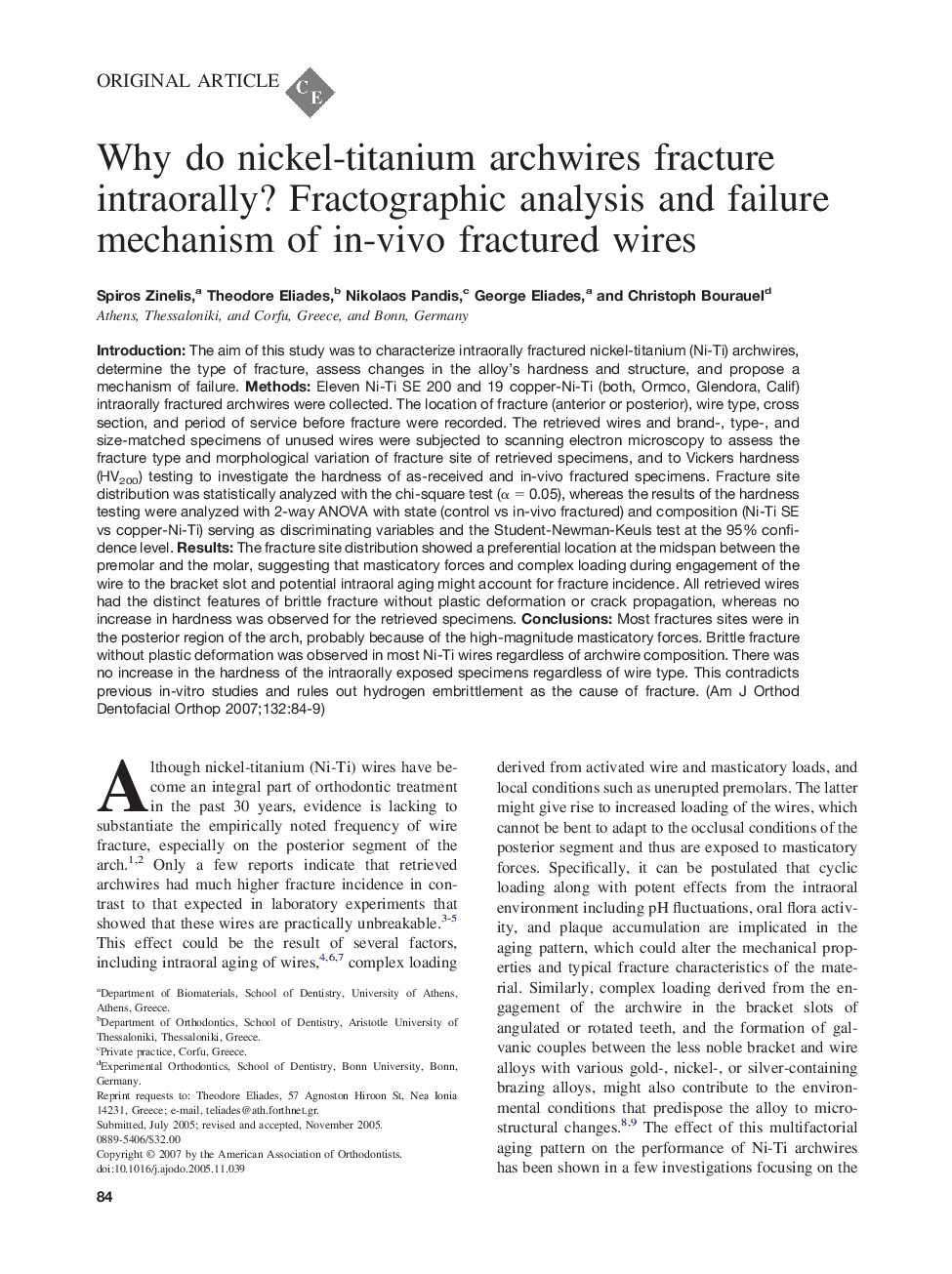| Article ID | Journal | Published Year | Pages | File Type |
|---|---|---|---|---|
| 3118572 | American Journal of Orthodontics and Dentofacial Orthopedics | 2007 | 6 Pages |
Introduction: The aim of this study was to characterize intraorally fractured nickel-titanium (Ni-Ti) archwires, determine the type of fracture, assess changes in the alloy’s hardness and structure, and propose a mechanism of failure. Methods: Eleven Ni-Ti SE 200 and 19 copper-Ni-Ti (both, Ormco, Glendora, Calif) intraorally fractured archwires were collected. The location of fracture (anterior or posterior), wire type, cross section, and period of service before fracture were recorded. The retrieved wires and brand-, type-, and size-matched specimens of unused wires were subjected to scanning electron microscopy to assess the fracture type and morphological variation of fracture site of retrieved specimens, and to Vickers hardness (HV200) testing to investigate the hardness of as-received and in-vivo fractured specimens. Fracture site distribution was statistically analyzed with the chi-square test (α = 0.05), whereas the results of the hardness testing were analyzed with 2-way ANOVA with state (control vs in-vivo fractured) and composition (Ni-Ti SE vs copper-Ni-Ti) serving as discriminating variables and the Student-Newman-Keuls test at the 95% confidence level. Results: The fracture site distribution showed a preferential location at the midspan between the premolar and the molar, suggesting that masticatory forces and complex loading during engagement of the wire to the bracket slot and potential intraoral aging might account for fracture incidence. All retrieved wires had the distinct features of brittle fracture without plastic deformation or crack propagation, whereas no increase in hardness was observed for the retrieved specimens. Conclusions: Most fractures sites were in the posterior region of the arch, probably because of the high-magnitude masticatory forces. Brittle fracture without plastic deformation was observed in most Ni-Ti wires regardless of archwire composition. There was no increase in the hardness of the intraorally exposed specimens regardless of wire type. This contradicts previous in-vitro studies and rules out hydrogen embrittlement as the cause of fracture.
